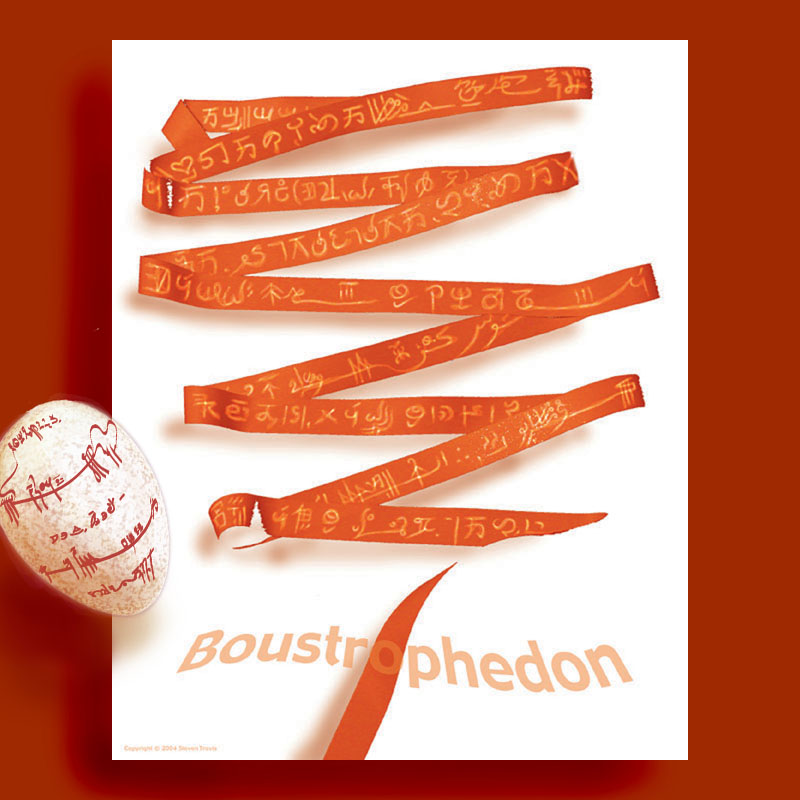
The definition of boustrophedon is the alternating directions in which you read the lines of a text. Several languages have favored the application, from Ancient Greece and the hilltown of Ventiçello to Rongorongo inscriptions of Easter Island. Unlike English where each line is read from left to right, or Hebrew where one reads from right to left, the boustrophedonic text is read both ways... starting the first line in one direction, then returning in the opposite direction on the next line down. I am presenting the following pages to illustrate how the system fits into Tapissary.
Boustrophedon has been a part of Tapissary since 1996 when the hieroglyphic language celebrated its 19th anniversary. Its usage has evolved over the years producing a unique variation. Instead of writing certain characters in mirror image on the lines that one reads 'backwards', the celloglyphs (hieroglyphs) in Tapissary are subject to radical internal changes. Verbs and prepositions are the parts of speech most likely to be effected with their own special 'backward' form. In Tapissary, I name the directions SUNRISE (reading from the east side of the page toward the west side), and SUNSET (reading from the west side toward the east side, i.e. from left to right as we do in English).
On the following page, you will see a sentence written once in SUNRISE, and once again in SUNSET. There are marked differences between the two styles. The distinction is for reading clarity. When examining a Tapisreal text, you will instantly recognize the direction of any line. I also enjoy its creative possibilities. The stable and conservative celloglyphs of SUNSET are complemented by the liberal flexibility of SUNRISE celloglyphs. The process of grouping these 'backward' characters into a given phrase requires some thought to design principles and a sense of indulgence for poetic license.


